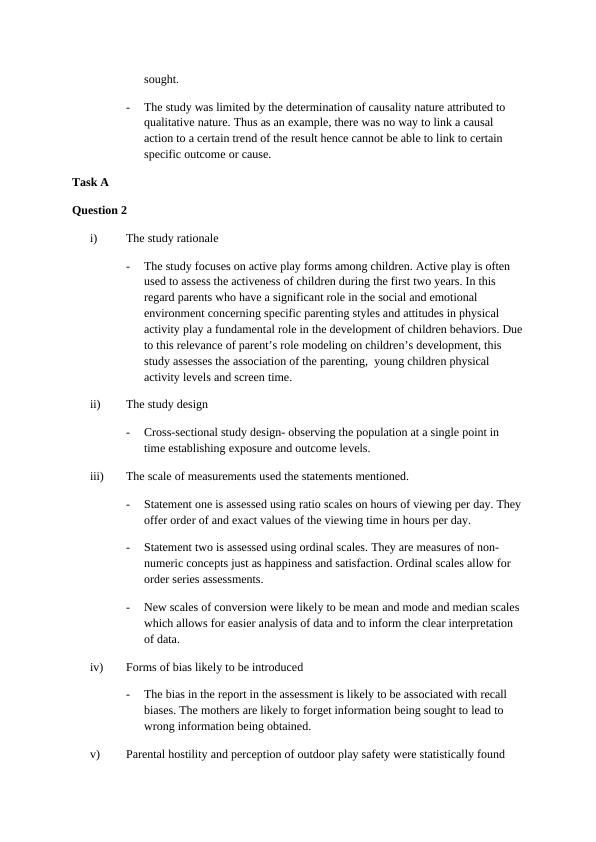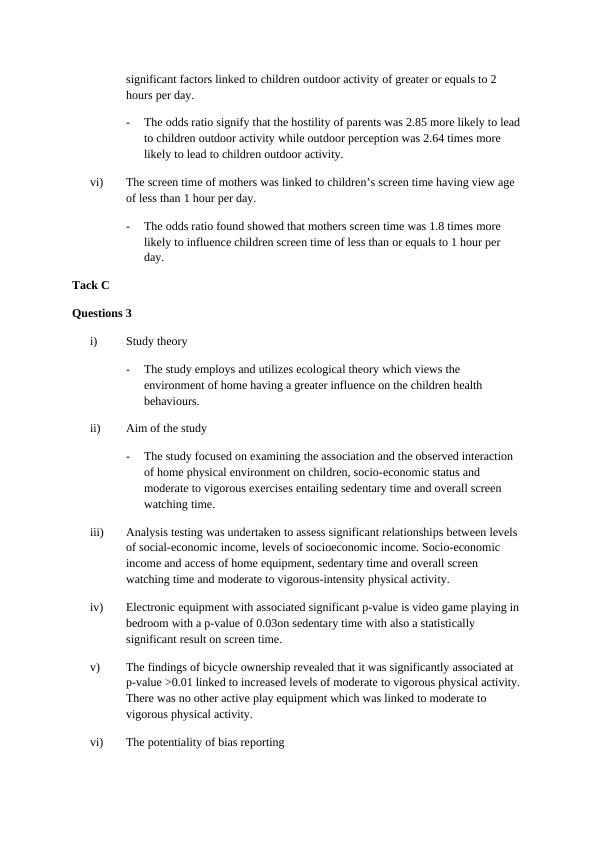Question and Answer l Awareness and Acceptances
Access, understand, interpret and report on findings from qualitative and quantitative research studies that investigate children’s screen time and physical activity, and make recommendations about how to address concerns about screen time and physical activity in Australian children.
6 Pages1573 Words17 Views
Added on 2022-09-16
Question and Answer l Awareness and Acceptances
Access, understand, interpret and report on findings from qualitative and quantitative research studies that investigate children’s screen time and physical activity, and make recommendations about how to address concerns about screen time and physical activity in Australian children.
Added on 2022-09-16
ShareRelated Documents
End of preview
Want to access all the pages? Upload your documents or become a member.
Psychology:- Careers Areas of Study, and Impact
|4
|755
|40
Experiences of Intimate Partner and Neighborhood Violence and Their Association with Mental Health in Pregnant Women
|12
|3478
|191
Parent Child Relationship in Middle Childhood
|8
|1645
|23
Research and Practice in Early Childhood Education
|6
|771
|218
Children and Young People Development Assignment
|5
|752
|354
A case study of a community care unit/psycho-social rehabilitation: John, a pseudoonym to protect privacy and confidentiality
|7
|2082
|89



